It’s will be World Migratory Bird Day this weekend, and there are many Australian birds that fit that description. There are the international migratory waders, including tiny birds that travel up to 13000km, and the resident species that travel between Tasmania and the mainland, or across different parts of the mainland. All of them are remarkable.

Red-necked Stints are Australia’s smallest international migratory birds; they are about 14cm long and weigh just 25g. Lying flat out on the beach watching these exquisite little waders is one of my favourite activities. They breed in Siberia and the western part of Alaska before heading to south-east Asia and Australia. The ones that come here start arriving around the end of August and into September, they head north again during March or April.

I have very few photographs of Critically Endangered Eastern Curlews. This species is the largest migratory wader that comes to Australia, sadly in numbers that have declined about 80% in the last 30 years. They are magnificent looking birds with their extremely long, decurved bill. They measure about 60-66cm and their average weight is 900g. They fly here from their breeding grounds in China and Russia.
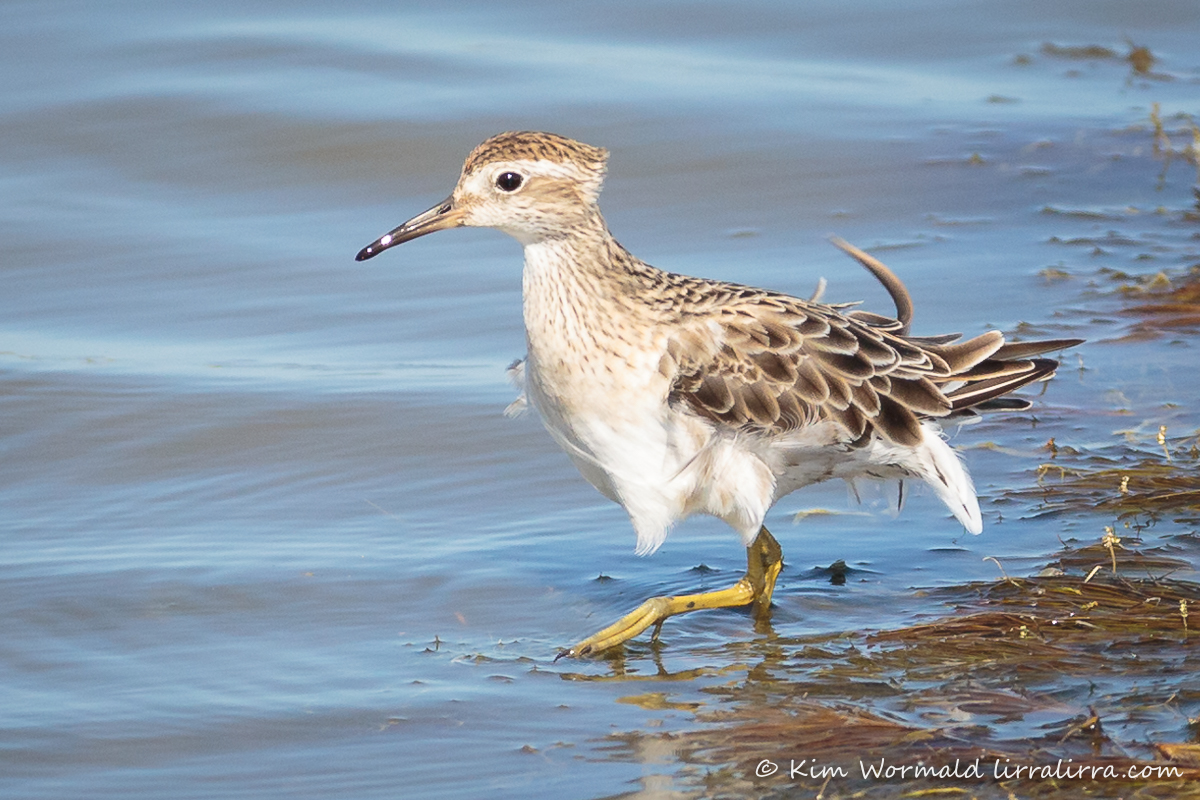
One of the waders I see most often is the Sharp-tailed Sandpiper. They are a medium-small wader that breed in Siberia.

One of my favourites is the Wood Sandpiper. I don’t see them often but love how delicate they look and the beautiful patterns of their feathers. They breed in subarctic Siberia.
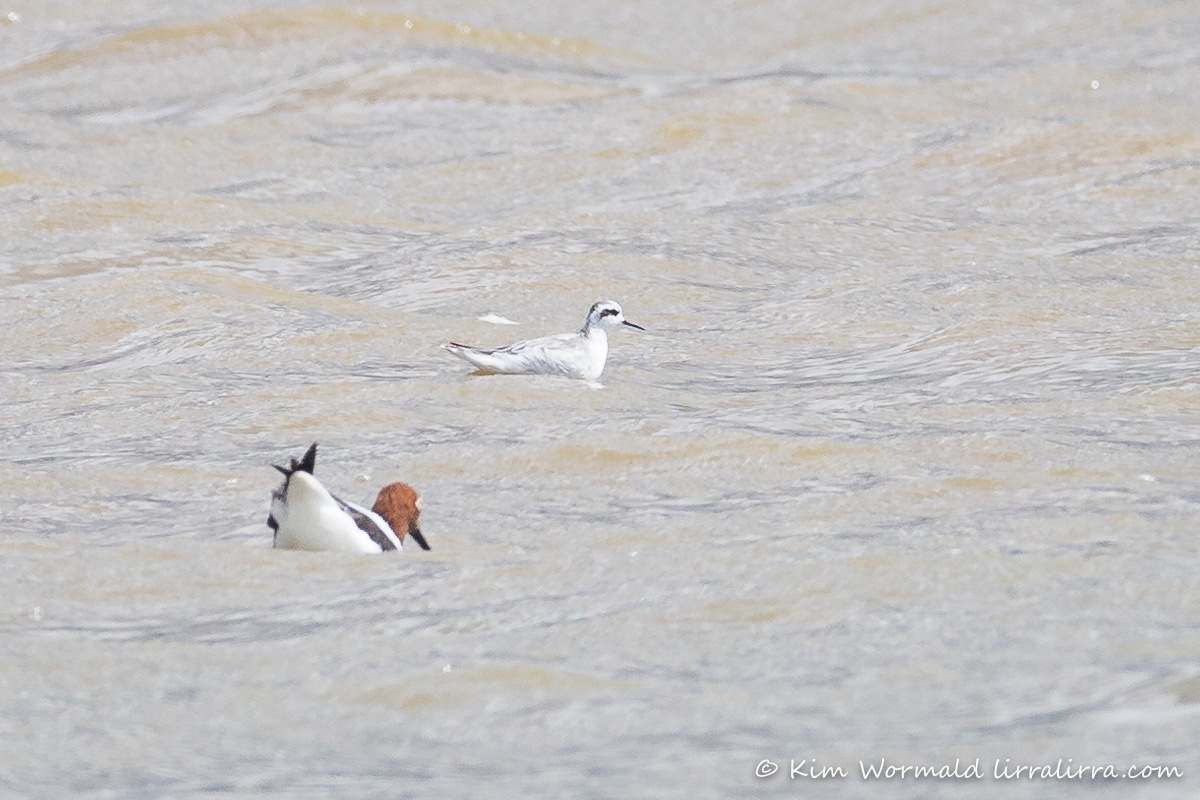
The Red-necked Phalarope is a rare vagrant to Victoria. I was super lucky to see this one when it visited Werribee’s Western Treatment Plant a few years ago. It would have been a very long trip from the arctic tundra.

Oh how I miss seeing these magnificent Short-tailed Shearwaters turn up each year. They migrate from as far distant as the Bering Sea and breed here. The youngsters, like the one above, are abandoned by their parents and left alone and unfed for two weeks as they to fledge. Then, and this is almost unbelievable, they take off and fly to the ice edge of the Antarctic. I’ve written more about them, and the dangers they face from humans, here: Short-tailed Bundle of Fluff
Once a shearwater (identified by experts as either a Hutton’s or a Fluttering) turned up deceased at my place. The poor bird must have been unwell or blown off course.

And now for something completely different – these tiny beauties are also migratory, flying across Bass Strait on their way from Tasmania to as far north as southern Queensland. I’m happy that so many of them choose to stay at my place.

Flame Robins and Scarlet Robins are a favourite part of winter for me and I’m hoping that they will soon fly south and spend a few months brightening my garden.
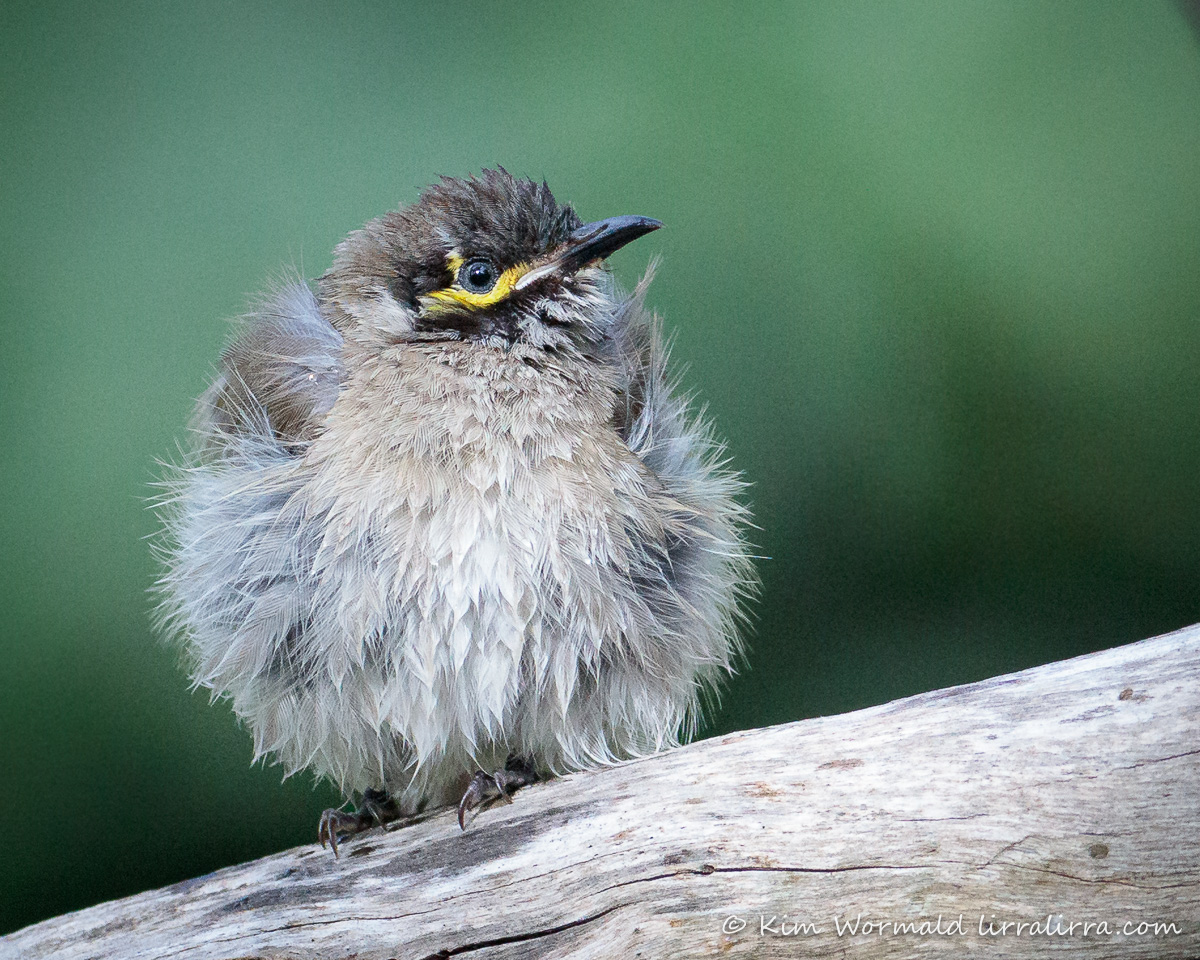
Many honeyeaters, like this Yellow-faced Honeyeater, and including White-naped Honeyeaters and Scarlet Honeyeaters, are also migratory. Many of them spend the winter in southern Queensland before flying south to breed.
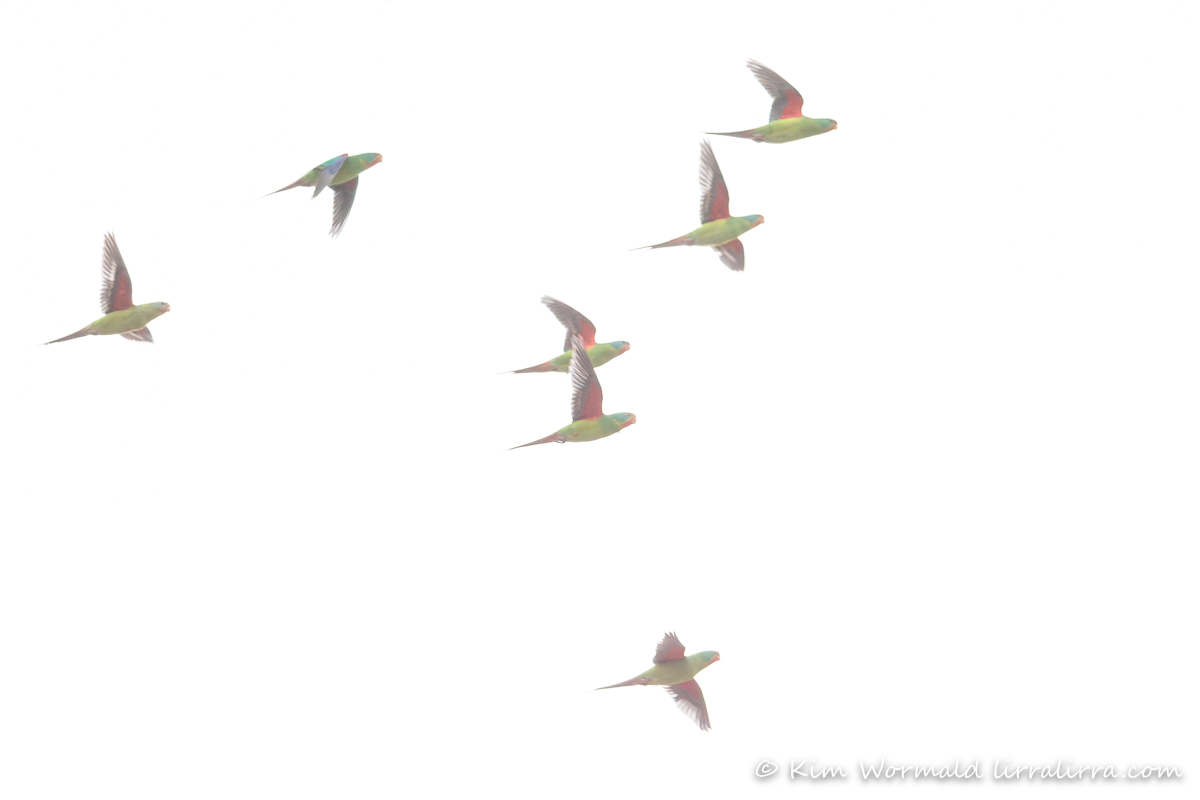
Swift Parrots and Orange-bellied Parrots both migrate between Tasmanian and the mainland, and both species are Critically Endangered. The swift parrots are very fast flyers and I was thrilled to quickly capture this very ordinary shot.
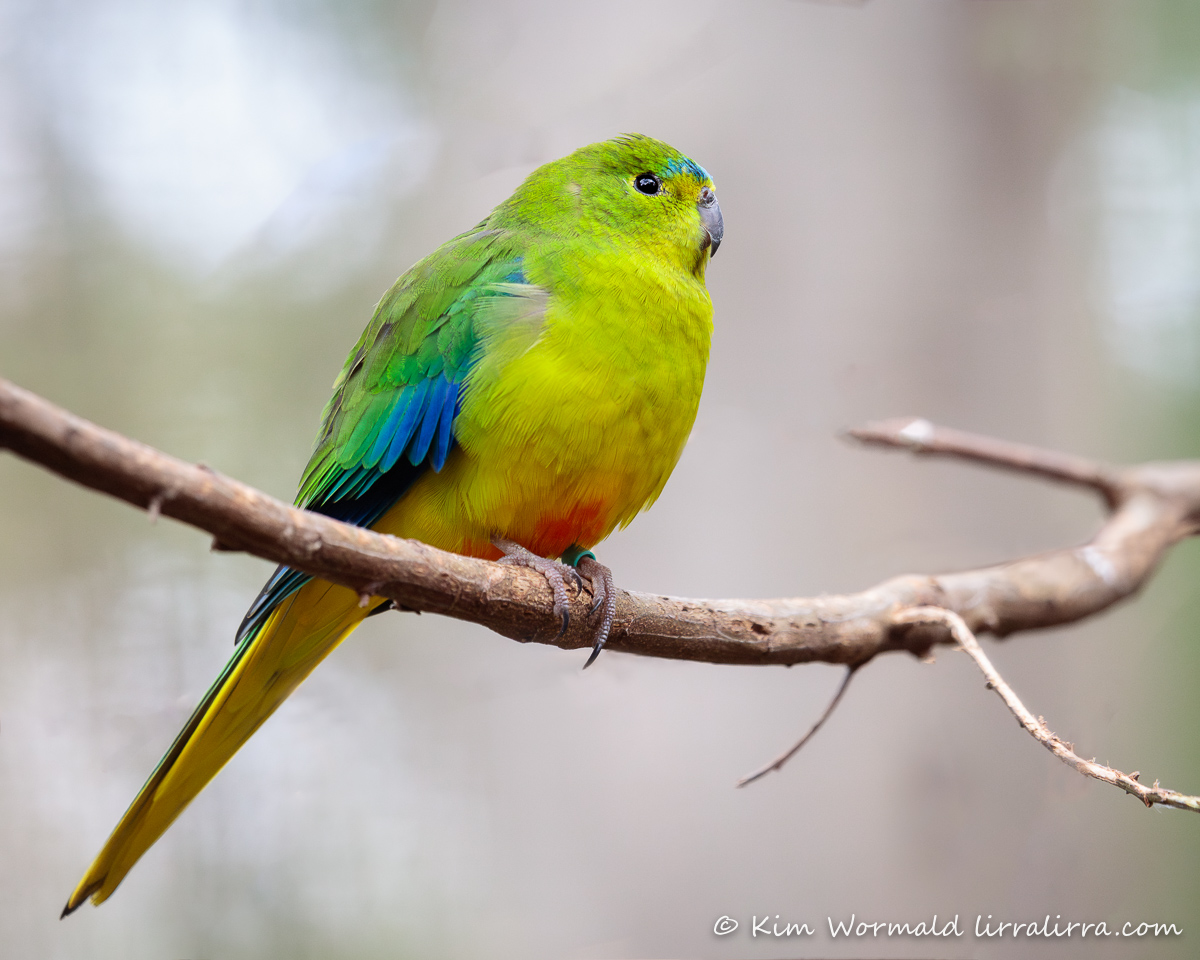
There are many species that undertake incredible journeys, and others that fly great distances when seeking food or water. Birds like ducks, swans and pelicans disperse (erratic migration patterns) in search of food and water, rather than the regular patterns of some of the true migratory species. I have made a fairly random selection of some of my favourites, though I keep feeling guilty that I haven’t included Grey Fantails, so I guess I’d better do that too, especially as I get a rare sub-species visiting here from time to time!

I photographed this Grey Fantail in my garden in March. I haven’t sent the photographs to any experts but for many years I’ve occasionally had Grey Fantails turn up with much whiter tails than the usual locals. I’m wondering whether this one might be a hybrid. Their tails look more like the inland sub-species, Rhipidura albicauda. As well as looking different they behave differently too. Most noticeably is the way they forage. The local Grey Fantails generally take insects on the wing by perching in trees and flying out to catch passing bugs. The ones with more white on their tails hover about a metre above the ground, often landing on the ground to stir up insects before continuing to take them much lower than I’ve ever seen the locals working. It’s fascinating to watch. The inland ssp is known to travel widely. Many years ago a Birdlife Australia expert was told about the bird here and came to see it for himself. Other ssp of Grey Fantail migrate between Tasmania and the mainland.
It is astounding that any of these birds can undertake such huge journeys, and astounding that they know where to go. There is so much to marvel at in the world of nature.
Happy birding, Kim
~ Prints and gifts Lirralirra Shop
~ Facebook page Kim Wormald – lirralirra
~ Facebook group Ethical Bird Photography

It truly is miraculous. Gorgeous pictures of these intrepid travellers!
Thanks Alyssa! I’m astounded by the brilliance of it all
Beautiful Kim – thank you as always. I’m off to volunteer at our local wetlands centre (Hobsons Bay) to celebrate the day. And as I type this, I’m looking at the Little Wattlebirds that have just taken over from the NH honeyeaters in our fairly young coastal banksia. The perfect superb fairy wrens will be next in line!
That sounds like a fabulous day Fiona! I hope you see lots of beautiful sights as you work, Kim
Migratory birds, many of them so tiny, blow me away. How they have the strength and stamina for those long flights… let alone the knowing where to go. I worry too that changing weather patterns will make those long journeys impossible.
It’s almost unbelievable isn’t it. I agree with everything you’ve mentioned!
Thank you for sharing your beautiful photography and excellent commentary- always appreciated!
Thank you for your kind comment Helen, I really appreciate it! Kim